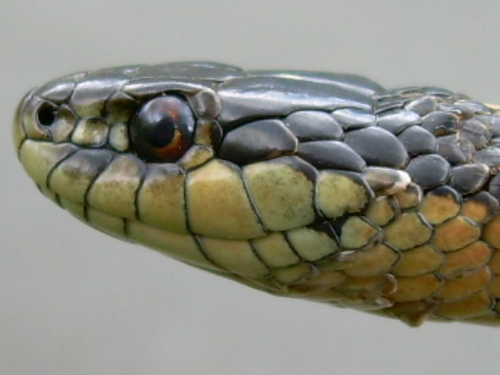
Researchers from Georgia Tech University are working along two parallel tracks to develop energy-efficient robots based on the teamwork of ants and the movement of snakes. Envisioned for use in developing search-and-rescue robots, the technology could also be adapted to swell the ranks of robots with green jobs, for example in designing and fabricating solar cells, performing environmental monitoring or remediation, or subbing in for humans to perform potentially dangerous work such as wind turbine maintenance.
Snakes, Robots and Energy Efficiency
Robotic snakes are becoming fairly common, at least in the development stages, for use in search and rescue operations as well as surveillance and reconnaissance, and even in art. What they all have in common is a long, snake-like appearance.
The Georgia Tech team, headed by professor David Hu, is focused less on looks and more on energy. The team’s goal is to translate the highly efficient movement of snakes into mechanical energy efficiency. Georgia Tech writer Jason Maderer explains:
“The machine must be flexible enough to move over uneven surfaces, yet not so big that it’s restricted from tight spaces. It might also be required to climb slopes of varying inclines. Existing robots can do many of these things, but the majority require large amounts of energy and are prone to overheating.”
Energy Efficiency and Rectilinear Motion
So far, the research – which involves studying 20 different kinds of snakes – has resulted in Scalybot 2, a two-link, all-terrain “snake” that looks absolutely nothing at all like a snake. Scalybot 2 was developed by Georgia Tech Ph.D. candidate Hamid Marvi, who focused specifically on the rectilinear motion of snakes. In contrast to lateral wiggling movements, a snake in rectilinear motion travels in a fairly straight line by lifting its scales in a wave-like sequence and literally pulling itself forward.
Robots and Teamwork
As for the ants, the team has been studying the mechanics of fire ant swarms. They cannot swim individually, but a swarm will form a ball that floats easily on water. In combination with robots like Scalybot 2, the result could be swarms of small robots that can navigate tricky terrain and can autonomously assemble into larger formations to overcome obstacles that are beyond the capabilities of an individual.
The Obama Administration and Advanced Robotics
The Georgia Tech research is supported with the help of a grant from the National Science Foundation. Though not explicitly leading to the development of a single ant-snake robot, the overall project is designed to break down biological systems of limbless propulsion into rational, mechanical principles that could be applied universally to robot design.
This dovetails with the robotics component of President Obama’s Advanced Manufacturing Partnership, which launched last year. The partnership is designed to promote next-generation robotics research with a particular focus on cooperative robotics, leading to “co-robots” that interact closely with humans.
After the Internet, What Next?
In tandem with the Advanced Manufacturing Partnership, the National Science Foundation has also teamed up with other federal agencies such as NASA, the National Institutes of Health and the U.S. Department of Agriculture to form the National Robotics Initiative.
It may be a while before a real-life R2-D2 or C-3PO springs off the drawing board, but the National Robotics Initiative is already gearing up for the potential sea change that will come about when co-robots become an everyday part of the modern landscape, similar to the one we’ve been undergoing with the Internet and
microprocessor technologies. The initiative includes an important educational component designed to “gain a better understanding of the long term social, behavioral and economic implications of co-robots across all areas of human activity.”
Source: Clean Technica
 Follow
Follow